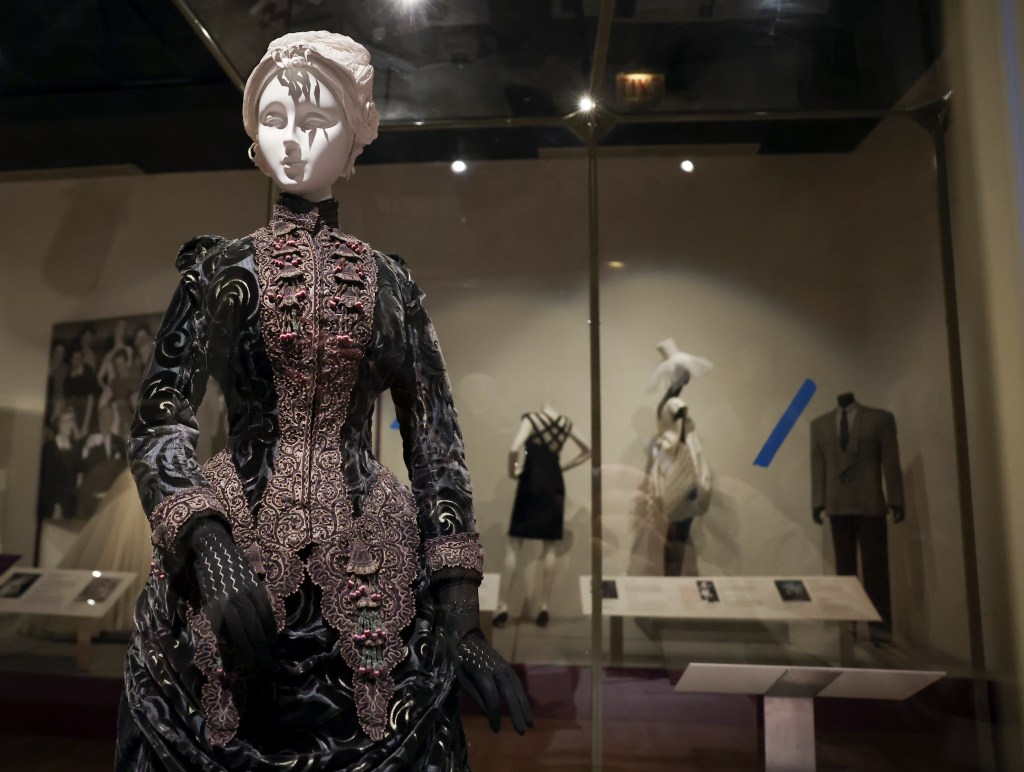Makes sense that the city of big shoulders would have a big closet.
The Chicago History Museum, which has been collecting garments for nearly a century, has amassed a huge clothing and textiles collection — so huge that, at 50,000 pieces, it’s likely among the largest of any museum in the world.
Forgive “Dressed in History: A Costume Collection Retrospective” — which opened earlier this month — for being able to cover just a sliver of it. Even so, its selection of 70 items, picked by costume collections manager Jessica Pushor in collaboration with some of her museum predecessors, covers quite the yardage. The oldest garment on display dates from the 1770s, while the most recent dates to last year. Among them are designs by known entities like Dior, Chanel, Yves Saint Laurent and Versace, and lesser-known phenoms, like Joel Klaff, the parody designer whose alter ego, Guy Taylor, turned up at city society events in the 1980s.
Of the 50,000 garments in the museum’s collection, about 10,000 were gathered by Phyllis Healy, the first costume curator of what was then called the Chicago Historical Society. While curating “Dressed in History,” current costume collections manager Pushor asked her predecessors to pick just one all-time favorite from the collection. All selected a piece that Healy had brought in during her tenure from 1932 to 1972.
“Without her and her amazing ability as the first curator, this collection would not be the way it is,” Pushor says. “She had connections with prominent old families. As they passed and people cleaned out their closets, she was invited in.”
You’d think that those clothes would have been dry-cleaned first. You’d have thought wrong. Pushor says it’s not uncommon for donations to arrive at the museum with food stains and other wear-and-tear. The singular dancer/choreographer Ruth Page — whose hundred or so donations to the museum include her famous Noguchi-designed sack costumes — left sweat and makeup stains on her donated clothes. Other items have seen even worse.
“We do have a pair of Hugh Hefner’s pajamas,” Pushor says, ominously.
The Chicago Historical Society hasn’t always been so open-minded. Sally Rand became (in)famous for her scandalous fan dance at the 1933 World’s Fair. Billboards advertising the event read “N.C.?” — as in, “No Clothes?” Ten years later, the Society asked Rand for her enormous ostrich-feather fans, only to balk under eleventh-hour pressure from its trustees.
It would be another 20 years, in 1966, before the Society approached Rand, hat in hand, to ask for the fans again. When she arrived to hand them over, Rand, ever the showwoman, scheduled a photo op posing atop the melted Great Chicago Fire relic outside the museum.

Another garment on display nearby has a similarly winding path to the collection. Charles Gunther — the confectioner and collector who also brought Abraham Lincoln’s deathbed to the museum — acquired an 18th-century dress allegedly owned by Queen Caroline of England. When the museum couldn’t authenticate it, it was sold at a rummage sale.
Luckily, Bertha Bauer, a suffragette and Illinois Republican Party activist, was “first in line” to buy it, according to Pushor. Her grandchildren donated it right back to the museum in the early 2000s.
“Sometimes we make mistakes,” Pushor says.

The exhibition’s square footage is humble, but the items on display pack a punch. A walking stick made from a bell that tolled during the Great Chicago Fire. White gloves that once belonged to Kenneth Sawyer Goodman, a playwright whose premature death inspired his parents to found the Goodman Theatre. A dress designed by Haitian American designer Fabrice and worn by Linda Johnson Rice, CEO of Johnson Publishing Company and daughter of founder John H. Johnson, to the Museum of Science and Industry’s inaugural Black Creativity Gala. A Bulls letterman jacket that posthumously honors the late designer Virgil Abloh.
“You don’t have to be a fashionista to come and enjoy the show,” Pushor says. “You can learn a lot about a person from the stains, from the spills. … Clothing and other wearable accessories help you understand history and people better.”
Hannah Edgar is a freelance writer.
“Dressed in History: A Costume Collection Retrospective” runs through July 27, 2025, at the Chicago History Museum, 1601 N. Clark St., open Tuesdays-Saturdays 9:30 a.m. to 4:30 p.m., Sunday noon to 5 p.m., closed Mondays; $19 general admission, $17 students and seniors; ticketing and more at chicagohistory.org

